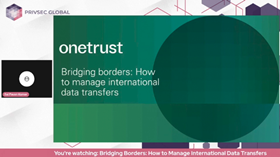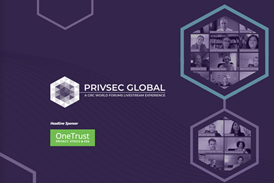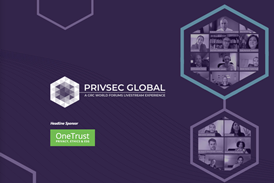Bridging Borders: How to Manage International Data Transfers

Personal data can be an organization’s most valuable, but also riskiest type of data. This data is governed by an ever-evolving regulatory landscape as reflected by the complexity of managing cross-border data transfers. Most recently the Schrems II case which has highlighted the direct conflict between US surveillance law and EU data protection.
Catch up and watch this session on-demand

Personal data can be an organization’s most valuable, but also riskiest type of data. This data is governed by an ever-evolving regulatory landscape as reflected by the complexity of managing cross-border data transfers. Most recently the Schrems II case which has highlighted the direct conflict between US surveillance law and EU data protection.
It is now, in the Golden Age of Data, that privacy professionals ask - how do we maintain a global data-driven economy while ensuring that it is not at the expense of the rights and freedoms of individuals?
This session will cover: Regulatory drivers impacting how organizations handle international data transfers Step by step guidance on how to conduct a Transfer Impact Assessment (TIA) and key considerations for streamlining processes Relevant measures to put in place to mitigate risk and ensure regulatory compliance.






